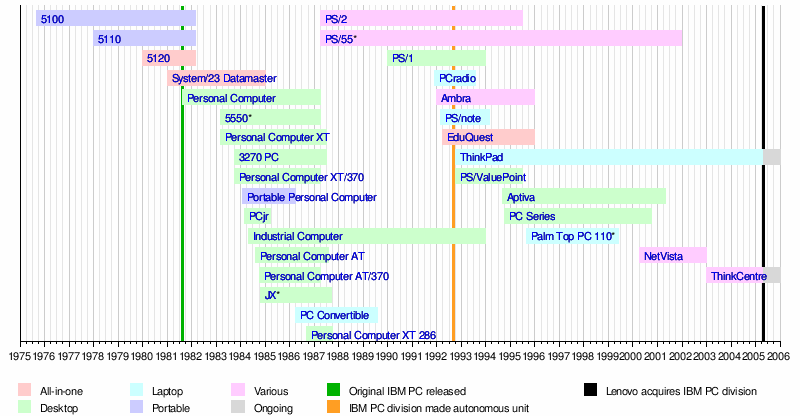
The IBM Personal Computer, commonly known as the IBM PC, spanned multiple models in its first generation (including the PCjr, the Portable PC, the XT, the AT, the Convertible, and the /370 systems, among others), from 1981 to 1987. It eventually gave way to many splintering product lines after IBM introduced the Personal System/2 in April 1987.
